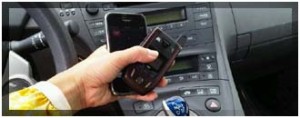Better Business Bureau Warns of Cell Phone Radiation Scam
By Sonia Isotov
The Hawaii Better Business Bureau (BBB), along with the Federal Trade Commission (FTC) are warning consumers to be on the lookout for these so-called “shields” and advising consumers to turn to free options when seeking to limit exposure to cell phone electromagnetic emissions.
“Leave it to scammers to jump on the latest scientific frenzy,” said Dwight Kealoha, president and CEO of Hawaii’s Better Business Bureau, in a written statement today. “It’s important for consumers to do their research before investing in any too good to be true technology. More times than not, victims will end up with a faulty product that, in many cases, doesn’t actually do any good.”
The BBB is warning that like many other too good to be true products, there is no scientific proof that these shields are actually effective. While it is always good to protect yourself from potentially harmful emissions, there are other ways to do it besides investing in a shield for your cell phone. The FTC even notes that these so-called “shields” may even interfere with your cell phone’s reception.
BBB and the FTC advise consumers to consider these free options for limiting cell phone electromagnetic emissions:
- Go hands free. When chatting on the phone for long periods of time consider using a hands-free device, like an earpiece, or using the speakerphone feature.
- Wait for a good signal. When you have a weak signal, your phone works harder, emitting more radiation. Phones also give off more radiation when transmitting than when receiving, so tilt the phone away from your head when you’re talking, and bring it back to your ear when you’re listening.
- Shop around. When looking for a new cell phone, consider investing in one that has a low specific absorption rate (SAR) before you buy. Measured in watts per kilogram of tissue, the SAR reveals how much radiation the body absorbs while using the mobile device. The FCC has record of this information for phones that were made in the last two years. You can find the FCC ID number on the inside of your cell phone’s case. Legally, in the US, a phone can’t emit more than 1.6 watts per kilogram.
For more consumer tips you can trust, visit www.hawaii.bbb.org and for more tips specific to cell phone emission, visit www.ftc.gov/bcp/edu/pubs/consumer/alerts/alt109.shtm











